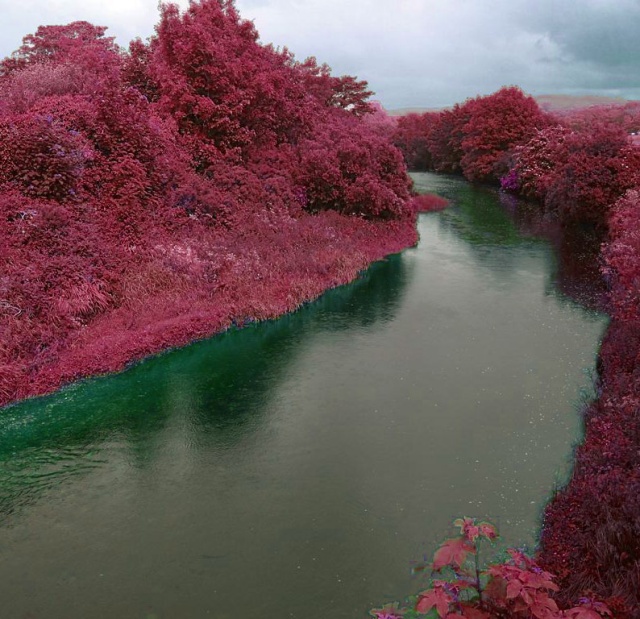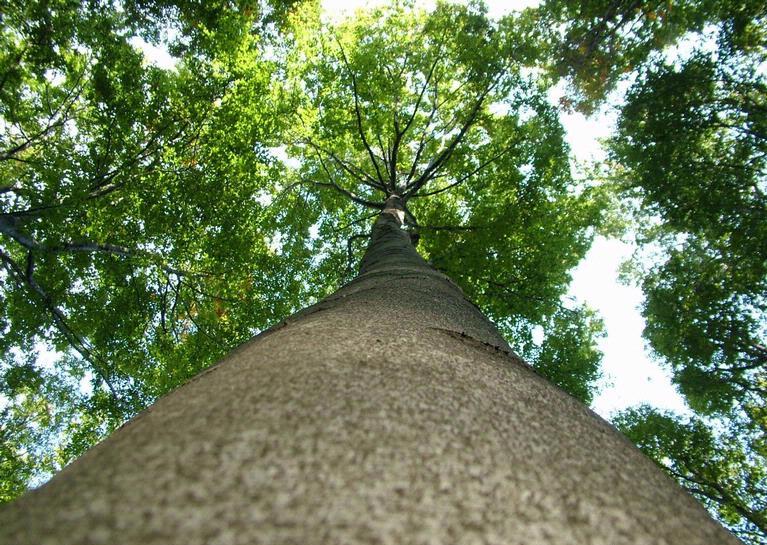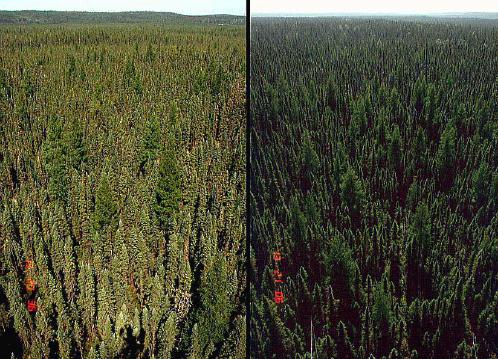New Technique Could Identify Planets With Extraterrestrial Trees

In the search for life on other planets, scientists are looking beyond single-celled organisms and are developing techniques that would help them detect multicellular life. In a recent study published in the journal Astrobiology, researchers are proposing a particular mathematical technique to detect tree-like multicellular structures on extrasolar planets.
"This technique allows us to identify planets that potentially have complex life and distinguish them from planets with simple life," said lead author Christopher Doughty, a junior research fellow in tropical forest science at the Environmental Change Institute at the University of Oxford in England. [Is the Rocky Alien Planet Gliese 581d Really Habitable?]
In other words, the authors predict that even when observing planets outside the solar system, scientists would be able to identify a planet with forests by the characteristics of the light that it reflects, even if it looks like just a dot in the viewing lens.
Removing the Shadows
Scientists have come up with various methods to detect life on extrasolar planets.

Some are working to detect the composition of gases in the atmosphere — the presence of oxygen, which on Earth is mainly a by-product of life, could be one such biosignature. Others are focusing on a reflectance signature such as the "red edge," which is the difference between the light that is absorbed for photosynthesis and the light reflected back in other wavelengths of the near-infrared spectrum.
When studying climate on Earth, it is important to understand the brightness of its surface. In order to determine the brightness, scientists must first account for the effect of shadows that are cast by various structures on the surface.
Sign up for the Live Science daily newsletter now
Get the world’s most fascinating discoveries delivered straight to your inbox.
The mathematical technique used to estimate the effect of shadows is what is known as bidirectional reflectance distribution function, or BRDF. It is defined as the change in reflectance of an object viewed from different angles. The method is already used on satellites orbiting Earth.
"Imagine going outside on a sunny day," Doughty explained. "When the sun is directly overhead, you will not see your shadow. If someone took a picture of you from above, there would be no shadows present, and the picture would be bright. Now go outside a few hours later. Your shadow will be present. A picture taken from above will now be darker because the shadow is included."
Trees on Earth developed their canopy form due to the competition for light and the need to transport water and nutrients. The authors of the study predict that if multicellular photosynthetic organisms are found on extrasolar planets, they too will be found to have a tree-like structure that casts shadows. [Planets With Two Suns Could Grow Black Trees]

Doughty and his co-author Adam Wolf of Princeton University used a BRDF model to simulate vegetation and how it reflects light at different planetary angles to estimate how the brightness of the planet changed with and without trees. The authors contend that, when viewed from space, forests appear brightest when the observer is in line with the Sun. This position is known as the "hot spot" because at that location, no shadows are visible.
"Even if the entire planet were reduced to a single pixel, under certain situations, there would be a difference in the brightness of the planet as it rotates around its star that would not be there if there were no trees," Doughty said.
There are other factors that affect a planet's brightness, such as the presence of water. Light reflecting from a planet that is covered in water or ice will make that planet look much brighter than a planet without those features.
The hunt for life
With the discovery of more and more planets outside the solar system, there is growing interest in devising methods to detect life on Earth-sized extrasolar planets. To do this, scientists rely on planetary biosignatures or indications that serve as evidence for both life that may have existed in the past and may exist now.
In addition to atmospheric biogenic gases such as oxygen, another biosignature scientists have already considered is the surface reflectance spectra of vegetation, or the amount of light reflected off plant matter at different wavelengths.
"There are also in situ techniques to look for chemical signs of life in the rock surface of a planet, but this requires actually visiting the planet for direct sampling, like the Martian rovers are doing," said Nancy Kiang, a scientist specializing in terrestrial biometeorology and biogeochemistry at NASA's Goddard Institute for Space Studies in New York City. "Astronomical techniques with telescopes look at the radiance spectrum of a distant planet. Up till now, the target biosignatures for telescopes have been biogenic gases and surface biological pigments."
The technique proposed in this study, however, is different.
"This technique [BRDF] can distinguish between a planet dominated by single cellular life and that of tree-like multicellular life," Doughty said.
Kiang said the study was a "good start with an original contribution to the concept of biosignatures." She pointed out that using the BRDF function would require knowing another biosignature — the reflectance spectrum of a plant leaf — in order to select the suitable wavelength to calculate the function.
"This could help distinguish complex life from, say, green slime," Kiang said.
This Astrobiology Magazine story was provided by SPACE.com, a sister site to LiveScience. Follow SPACE.com for the latest in space science and exploration news on Twitter @Spacedotcom and on Facebook.










